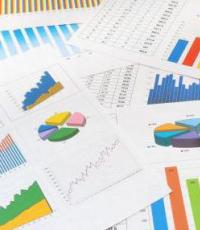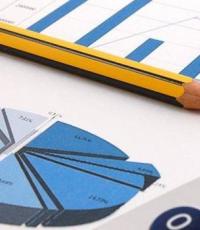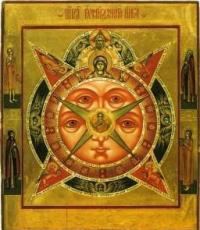25 general production expenses 26 general business expenses. General and general production expenses: definition, composition, accounting and distribution
In the process of producing products at an enterprise, costs arise that are not directly attributed to a specific cost object. They are included in general production expenses. In addition to the costs of managing workshops (divisions, sections) of main and auxiliary production, they include those for the operation and maintenance of machinery and equipment for general production purposes.
General production expenses include:
1. Costs intended for production management:
Salary of the management apparatus for sections, workshops, ;
Contributions for health insurance, social events;
To pay for business trips of site and workshop workers.
2. Depreciation of fixed assets and intangible assets for local and workshop purposes.
3. Costs of servicing assets for general production purposes:
Repair and operation;
Operating lease;
Insurance.
4. Costs for organizing production and improving production technology:
Employees' wages;
Contributions to social funds;
Expenses intended to improve products, increase their reliability and other performance characteristics;
Payment for services and work of third parties.
5. Costs intended for the maintenance of production premises (lighting, heating, drainage and water supply, other utility costs) and the production process (salaries of general production personnel, deductions for health insurance and social events).
6. Costs for safety precautions, technological control, environmental and labor protection.
7. Other costs:
Shortages from damage and loss of material assets;
Costs for moving materials and raw materials within the enterprise;
Payment for downtime.
The distribution of overhead costs has some features. Since these costs are classified as indirect costs, it is economically feasible to distribute them and tie them to such a concept as normal power. This concept refers to the expected average volume of production activity achieved under the condition of normal activities over several or years. At the same time, the planned volume of production maintenance is also taken into account. Normal power is determined by the organization independently. General production costs are calculated based on standard capacity. They are divided into variables and constants. The composition and list of these indicators is determined by the enterprise independently.
Variable costs are the costs of operating and maintaining production that vary in proportion to adjustments in production volumes. They are distributed to all cost objects using the selected distribution base (production volumes, wages, hours of work) based on the received actual capacity of the enterprise in Thus, they are fully included in the cost of production.
Fixed costs are the costs of managing and maintaining production, which are quite stable (despite changes in production volumes). They are distributed to cost objects using a special base (production volumes, wages, hours of work), based on the calculated normal capacity of the enterprise. Unallocated fixed costs are included in the cost of goods manufactured in the period in which they arose. The realized one includes the difference between the actual fixed costs and their amount calculated according to the normal one. If there are several workshops or divisions in the enterprise, general production costs are distributed according to their breakdown.
Accounting for overhead costs is based on:
The selected cost distribution base;
Calculated normal power;
The total planned value of overhead costs with their breakdown into fixed and variable.
They are accounted for in accounting account 25 “General production expenses”.
After all, total production costs include those costs associated with production that cannot be directly attributed to a particular type of product. Therefore, the answer to the question whether general production costs can be classified as indirect costs will be positive. After all, if general production expenses are direct, then they should be taken into account directly as expenses of the main production, and not collected in advance on account 25 “General production expenses” (Order of the Ministry of Finance dated October 31, 2000 No. 94n). General production expenses include only such other production expenses, the connection between which and the specific type of product being manufactured is not obvious.
At the same time, the composition of overhead costs can include a constant part of expenses and variable overhead expenses.
Overhead budget
In we talked about production cost estimates, which are prepared for planning and managing costs. At the same time, this estimate may separately highlight the costs of main production, general production costs and costs of another nature. The organization develops the general production cost estimate form independently based on specific detailing needs.
Such costs, in turn, can be allocated to general production and general business expenses.
Methods for distributing general production and general business expenses
The presence of the specifics of the production process for each individual organization does not imply a universal and strictly fixed division of costs into general economic and general production. Each company independently chooses methods for distributing overhead and general business expenses. The principle of correlating expenses in accounting to one category or another is enshrined in the accounting policy. However, there is a certain general approach that all companies without exception should adhere to. General production expenses include costs in the usual line of business that arise for an enterprise in connection with the need to maintain main and auxiliary production facilities. General business expenses include costs associated with managing an organization that are not directly related to the production process. However, they also participate in determining the cost of goods or services produced.
More specifically, general production expenses are the costs of maintaining machinery and equipment, deductions for depreciation and repair costs of fixed assets, costs of various utilities, the purchase of which is necessary as part of the production process, rent of premises, machinery, equipment and others objects used in production, salaries of technical personnel, and so on. In short, these are all those costs that a company can accurately correlate with the production of a specific product.
General business expenses include the costs of maintaining administrative and management personnel not related to the production process, depreciation and other costs of maintaining the operating system and rental and maintenance of premises related specifically to this company structure, costs of paying for information, auditing, consulting services, etc. administrative expenses similar in purpose. Such costs are important for the functioning of the company as a whole, but they cannot be attributed to a specific production process.
How exactly are general production and general business expenses distributed in accounting? Let's try to figure it out.
Accounting for overhead costs
To reflect costs that are directly related to the production of any product, the Chart of Accounts uses account 25 “General production expenses”. Postings on it are reflected taking into account information about the costs of servicing the main and auxiliary production facilities of the organization. The debit of this account accumulates data on the composition of costs, which are also reflected in the credit of accounts payable to personnel, accounting for inventory, rental deductions, etc. Simply put, analytical accounting for account 25 can be carried out in the context of various expense items. If the company has many divisions, workshops or similar separate structures, then it is also advisable to carry out analytics on account 25 “General production expenses” taking this factor into account, using additional division. General production expenses are written off by posting from the credit of account 25 to the debit of accounts 20 “Main production”, 23 “Auxiliary production”, 29 “Service production and facilities”. This entry is made at the end of the month, thus the accumulated cost data on account 25 is reset to zero.
An example of reflecting general business expenses and postings:
|
Materials written off for general production purposes |
|
|
Accrued depreciation of general production equipment |
|
|
Wages paid to employees involved in production |
|
|
Insurance premiums are calculated on the wages of workers involved in production. |
|
|
Works/services of third party suppliers purchased for general production purposes are accepted |
|
|
General production expenses were written off as expenses of the main production |
Accounting for general business expenses
To summarize information about expenses for management needs not directly related to the production process, the “General business expenses” account is intended. In contrast to the distribution of general production expenses, general business expenses on account 26 in most cases are not divided, from the point of view of analytical accounting, among the various structures of the organization. After all, as a rule, a company has only one administrative and management division, which is responsible for overseeing its work as a whole. However, if accounting tasks require it, the organization can maintain additional parameters for data reflection.
At the same time, the reflection of the costs themselves in various areas (wages, materials, rent, depreciation, etc.) will be similar to the registration of entries in account 25 “General production expenses”. That is, the postings in this case will be formed exactly according to the same principle: from the credit of accounts for inventory accounting, settlements with employees for wages, settlements with other organizations (individuals) to the debit of account 26. At the end of the month, as well as general production, general business expenses are written off by posting to the debit of accounts 20, 23 or 29.
If we are talking about companies that do not carry out production activities, but, say, are engaged in the provision of services, then such organizations can use account 26 to summarize information about expenses for all their activities. In this case, the expenses reflected on it will be written off at the end of the month not through account 20, but immediately to the debit of account 90 “Sales”.
The profitability of any economic entity depends on the correct reflection and accounting of costs. Their optimization, control, and distribution affect the cost of goods (services) and reduce the risks of sanctions from tax authorities. At the initial stage of activity, each company plans and forms a list of costs necessary to implement production processes. An important aspect reflected in the accounting policy is the methods of distribution of general production and
Cost classification
The pricing policy of an enterprise takes into account the market situation regarding a certain type of goods, services or work, while the cost is regulated due to the amount of invested profit or the redistribution of business expenses. Production costs are a constant value that is the sum of actual cost indicators. The selling price (of work, services, goods) includes cost, commercial expenses and the amount of profit.
Each organization creates provisions in its accounting policies that regulate the accounting of expenses, methods of their distribution and write-off. Accounting regulations (Tax Code, PBU) recommend a list and classification of costs included in the cost price. The consumption rate of each item is established by the internal documents of the enterprise. Costs are systematized according to various criteria: by economic content, by time of occurrence, by composition, by the method of inclusion in the cost, etc. To formulate calculations, all costs are divided into indirect and direct. The principle of inclusion in the cost depends on the number of types of products manufactured by the company or services provided. Methods for distributing direct costs (salaries, raw materials, depreciation of capital equipment) and indirect (expertise and maintenance work) are determined in accordance with regulatory documents and internal regulations of the company. It is necessary to dwell in more detail on general and general production expenses, which are included in the cost by the distribution method.

ODA: composition, definition
With a branched production structure aimed at producing several units of products (services, works), the enterprise incurs additional costs that are not directly related to the main type of activity. At the same time, accounting for expenses of this type must be kept and included in the cost price. The structure of the ODA is as follows:
Depreciation, repair, operation of equipment, machinery, intangible assets for production purposes;
Contributions to funds (FSS, Pension Fund) and wages of personnel servicing the production process;
Utility costs (electricity, heat, water, gas);
Other expenses related directly to the production process and its management (write-off of used equipment, equipment, travel expenses, rent of space, services of third-party organizations, provision of safe working conditions, maintenance of auxiliary units: laboratories, services, departments, leasing payments). Production costs are costs associated with the process of managing the main, service and auxiliary departments; they are included in the cost price as general production costs.

Accounting
Methods for distributing general production and general business expenses are based on the total value of these indicators accumulated during the reporting period. To summarize information on ODA, the chart of accounts provides for a cumulative register No. 25. Its characteristics: active, collectively distributive, has no balance at the beginning of the month and the end (unless otherwise provided by the accounting policy), analytical accounting is maintained by divisions (shops, departments) or types of products. During a certain period, information on actual expenses incurred is accumulated in the debit of account 25. Typical correspondence includes the following operations.
- Dt 25 Kt 02, 05 - the accrued amount of depreciation of fixed assets and intangible assets is allocated to OPR.
- Dt 25 Kt 21, 10, 41 - goods of own production, materials, inventory are written off as production expenses.
- Dt 25 Kt 70, 69 - salary accrued to the personnel of the operational development department, deductions were made to extra-budgetary funds.
- Dt 25 Kt 76, 84, 60 - invoices issued by counterparties for services rendered, work performed are included in general production expenses, the amount of shortfalls identified based on the results of the inventory is written off.
- The debit turnover of account 25 is equal to the amount of actual expenses, which at the end of each reporting period are written off to the calculation accounts (23, 29, 20). In this case, the following accounting entry is made: Dt 29, 23, 20 Kt 25 - accumulated expenses are written off for auxiliary, main or servicing production.

Distribution
The amount of overhead costs can significantly increase the cost of manufactured products, work performed, and services provided. At large industrial enterprises, pilot projects are planned and the concept of “consumption rate” is introduced; deviations of this indicator are carefully studied by the analytical department. In organizations engaged in the creation of one type of product, methods for distributing general production and general business expenses are not developed; the sum of all costs is fully included in the cost price. The presence of several production processes implies the need to include all types of costs in the calculation of each of them. The distribution of general production costs can occur in several ways:
- Proportional to the selected basic indicator, which optimally corresponds to the combination of ODA and the volume of output (volume of goods produced, wage funds, consumption of raw materials or supplies).
- Maintaining separate accounting of ODA for each type of product (costs are reflected in analytical sub-accounts opened to register No. 25).
In any option, methods for distributing indirect costs must be enshrined in the accounting policies of the enterprise and not contradict regulations (PBU 10/99).

OCR, composition, definition
Administrative and economic costs are a significant factor in the cost of goods, work, products, and services. General business expenses are a total reflection of management costs, they include:
Contributions to social funds and remuneration of management personnel;
Communication and Internet services, security, postal, consulting, audit expenses;
Depreciation charges for non-production facilities;
Office, utility bills, information services;
Expenses for personnel training and compliance with industrial safety rules;
Other similar costs.
The maintenance of the management apparatus is necessary for the implementation of production processes and further marketing of products, but the high proportion of this type of expense requires constant accounting and control. For large organizations, the use of the standard method of calculating operational and technical expenses is unacceptable, since many types of administrative expenses are variable in nature or, in case of a one-time payment, are transferred to the cost of production in stages, over a certain period.

Accounting
Account No. 26 is intended to collect information about the company. Its characteristics: active, synthetic, collecting and distributing. Closes monthly at 46.23, 29, 90, 97, depending on what methods of distribution of general production and general business expenses are adopted by the internal regulatory documents of the enterprise. Analytical accounting can be carried out in the context of divisions (departments) or types of products (work performed, services provided). Typical account transactions:
- Dt 26 Kt 41, 21, 10 - the cost of materials, goods and semi-finished products is written off for maintenance.
- Dt 26 Kt 69, 70 - reflects the calculation of wages for administrative and economic personnel.
- Dt 26 Kt 60, 76, 71 - general business expenses include services of third-party organizations paid to suppliers or through accountable persons.
- Dt 26 Kt 02, 05 - depreciation of non-production objects, intangible assets and fixed assets was accrued.
Direct cash costs (50, 52.51) are usually not taken into account as part of the OCR. An exception may be the accrual of interest on loans and borrowings, and this accrual method must be specified in the accounting policy of the enterprise.
Write-off
All general business expenses are collected in monetary terms as a debit turnover of account 26. When closing a period, they are written off to the main, servicing or auxiliary production, may be included in the cost of goods to be sold, charged to future expenses, or partially allocated to the enterprise's loss. In accounting, this process is reflected by the following entries:
- Dt 20, 29, 23 Kt 26 - OCR included in the cost of production of the main, service and auxiliary production.
- Dt 44, 90/2 Kt 26 - general business expenses are written off in trading enterprises, to the financial result.

Distribution
General business expenses in most cases are written off similarly to general production expenses, i.e., in proportion to the selected base. If this is of a long-term nature, then it is more appropriate to attribute them to future periods. Write-offs will occur in certain parts attributable to cost. Conditionally variable general business expenses can be attributed to or included in the price of goods produced (in trading enterprises or those providing services). The method of distribution is regulated by internal documents.
1C
Currently, accounting for general production and general economic costs is carried out in accounting databases and programs of the 1C group. Distribution methods are regulated by special settings. When calculating the cost of experimental work and industrial maintenance, it is necessary to check the boxes opposite the approved base in the “production” tab. When writing off as deferred expenses, it is necessary to establish the period and amount. To include costs in the financial result, fill in the appropriate tab. When the “period closing” function is launched, general production and general business expenses accumulated in registers 25 and 26 are automatically written off to the debit of the specified accounts. This process forms the cost of the finished product.
What is count 25 for?
Account 25 - General production expenses - is intended for recording business transactions that reflect the organization's expenses that are associated with servicing various production assets - both basic and auxiliary. Such expenses may include:
- those related to maintaining the functionality of equipment;
- depreciation;
- payment for utilities used in production;
- remuneration for those workers who are employed in service industries;
- remuneration of contractors involved in production maintenance.
It is necessary to fundamentally distinguish between general production expenses recorded on the account in question and those expenses that relate to general business expenses, which are recorded on account 26. The fact is that general business expenses include mainly those expenses that are associated with ensuring the functioning of the enterprise management system. Examples of such expenses:
- salaries of managers and their subordinates (for example, secretaries);
- expenses for software installed on the computers of management and subordinates;
- office rent;
- services of external lawyers, appraisers, auditors.
General business expenses are thus not directly related to production. But their implementation will affect the efficiency of production, as is the case with the expenses recorded on account 25. But since production and management are two different components of the business process, this leads to separate accounting of business transactions that correspond to them.
Is the account active or passive?
A very common question: is counting 25 active or passive? What is the main criterion for classifying it as one or another type of account?
Accounting account 25 is a classic active account. It records assets, in this case represented by general production expenses.
It may seem unusual that expenses are assets. But the main feature of an asset is its focus on making a profit. The incurrence of expenses associated with ensuring production satisfies this criterion. By investing in something in production, the company seeks to make a profit due to this (even if there is no guarantee that the expenditure made will bring income, as is the case, for example, with investing in a bank deposit, the profitability of which is in most cases guaranteed).
Active accounting accounts, which include account 25, may reflect:
- debit transactions showing an increase in an asset (in this case, an increase in production costs);
- credit transactions showing a decrease in an asset.
You can learn more about the essence of debit and credit transactions and get acquainted with other nuances of preparing accounting entries at an enterprise from the article.
Don't know your rights?
For now, let’s look at examples of debiting and crediting business transactions using account 25 in practice.
Account 25 in practice: transactions for turnover (and account closure)
The general algorithm for using count 25 looks like this:
- During the billing period adopted in the accounting policy (for example, a month), debit business transactions are recorded on account 25, reflecting expenses related to production. The following wiring can be used for this:
- Dt 25 Kt 02 - to reflect depreciation;
- Dt 25 Kt 10 - to reflect the costs of materials;
- Dt 25 Kt 69, 70 - to reflect labor costs.
Each posting corresponds to a specific supporting document. In the case of the specified postings, the following will be applied accordingly:
- statement for calculating depreciation;
- invoices, limit-fence cards;
- accounting certificates for wages, time sheets.
- At the end of the billing period, account 25 is closed.
The accumulated turnover is written off as part of credit transactions to an account corresponding to the characteristics of the production to which general production expenses are allocated. In the general case, this is account 20. The posting used is: Dt 20 Kt 25. The main supporting document is the statement of registration and distribution of general production.
The use of postings on account 25 has a number of nuances that are worth considering.
Applying count 25: nuances
When making entries with account 25, you should keep in mind that:
- The use of the account may be subject to industry regulations.
For example, in agriculture, the governing normative act that regulates accounting for account 25 is Order No. 654 of the Ministry of Agriculture of Russia dated June 13, 2001. This order contains recommended subaccounts that are applied depending on the specific type of activity of the agricultural organization.
- If the expenses on account 25 relate to two types of production simultaneously, the main (account 20) and auxiliary (account 23), which is possible if we are talking, for example, about a common power supply line, then at the end of the month two entries can be made, allowing you to write off expenses for both types of production at the same time.
The amount of expenses recorded in each credit entry for account 25, in this case, can be calculated, for example, based on the ratio of the wages of workers in each of the industries.
The chosen method of dividing costs for different types of production should be fixed in the accounting policy.
General production costs are directly related to the technological processes within which products are produced at the enterprise. These expenses are reflected in active account 25, and then written off to the main production account.




